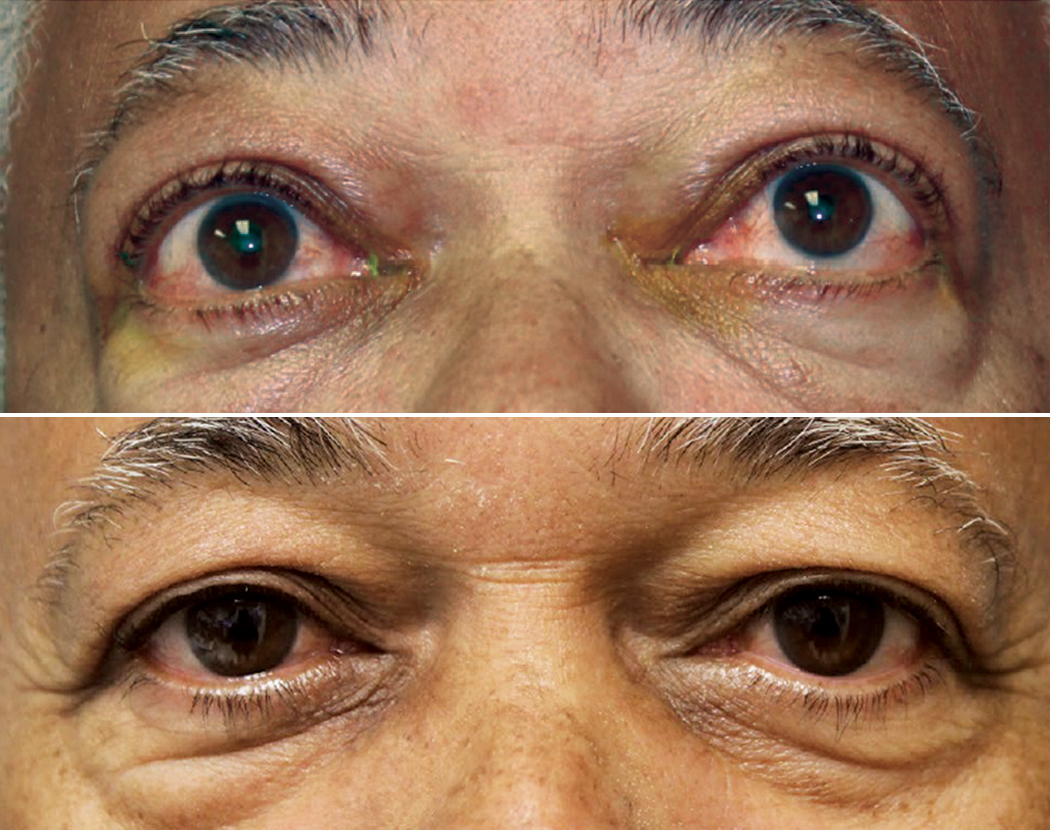 |
|
On average, patients with thyroid eye disease who needed more than one course of teprotumumab therapy were seven years older than their non-retreated counterparts (60 vs. 53 years). Photo: Jacob Lang, OD. Click image to enlarge. |
Since its FDA approval in 2020, more than 15,000 patients with thyroid eye disease (TED) have been treated with teprotumumab, now recommended as a first-line agent for those whose primary concern is proptosis or diplopia. The short-term efficacy of the medication is well-documented, though the durability of its effects remains in question. In clinical trials, nearly 30% of patients experienced a flare and had received a second treatment by the one-year follow-up. To further investigate the rate and drivers of retreatment in this population, a new multicenter, retrospective study was recently conducted on 119 patients with TED. After a full course of teprotumumab therapy (eight infusions), 24% of patients required retreatment, the only driver being age.
The researchers gathered the following data from patient charts across three centers in the US: age, gender, months since diagnosis of TED, smoking status and prior treatments. The overall retreatment rate cited above was not significantly different between the three sites. Additionally, there was no difference in proptosis, diplopia score or duration of TED between patients who received one or two courses of treatment.
Among patients who were retreated, 82% had a significant proptosis response (≥2mm reduction from baseline) following their initial course; in the non-retreated group, 68% of patients had a clinically significant proptosis response.
“On average, those who went on to have retreatment had a clinical activity score that was two points greater, a proptosis that was 2mm worse and a Gorman diplopia score that was one point greater than at the end of the initial course of therapy,” the researchers explained in their study, recently published in Journal of Ophthalmology. “It appears that worsening clinical activity score and proptosis were the main reasons for retreatment.”
When evaluating factors associated with retreatment, age was the only significant driver identified. On average, retreated patients were seven years older than those who received just one course of teprotumumab (60 vs. 53 years). The data also denied an association between prior treatment for TED and the need for retreatment, as well as between smoking history and retreatment, despite these two associations being suggested in previous literature.
One limitation of this study is the possibility that patients who did not return at one year could have sought retreatment elsewhere, though the researchers noted in their paper that in their experience, “this would constitute only a small number of patients, if any.”
In conclusion, the 24% retreatment rate reported in this study in patients who received a full course of uninterrupted treatment of teprotumumab “is much closer to the level of reactivation seen in the natural history of TED (15.7%) and clinical trials (29%) than has been reported in a recent retrospective study (47%),” the study authors wrote. Given the growing body of evidence that suggests the chronicity of TED, it is likely that many of these patients will require further treatment, and according to this study’s findings, these individuals are more likely to be older. “Having identified a retreatment rate and a risk factor, it may be possible to better inform patients prior to initiating treatment,” the authors concluded.
Ugradar S, Parunakian E, Malkhasyan E, et al. The rate of retreatment in patients treated with teprotumumab: a multicenter study of 119 patients with 1 year follow up. J Ophthalmol. July 18, 2024. [Epub ahead of print]. |


